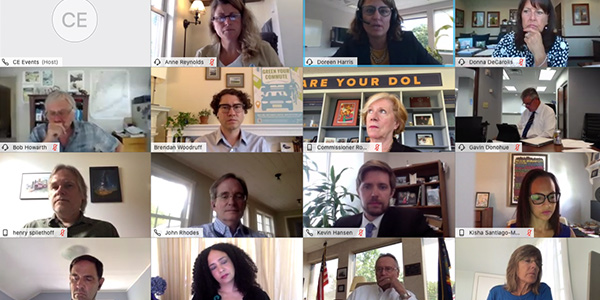New York State agencies and experts are monitoring the aftermath of the prolonged power outages in Texas earlier this month to determine what actions, if any, New York should take to maintain a resilient grid, New York State Energy Research and Development Authority (NYSERDA) Interim CEO Doreen Harris said Friday.
“Clearly the full situation and resultant analysis is still evolving,” Harris, who cochairs the New York Climate Action Council (CAC), said during a CAC meeting Friday. “With respect to planning, in a New York context, we have certainly planned for weather extremes, particularly cold weather protections for our generators.”
She said, however, that the situation in Texas raises questions about whether additional oversight of New York power generators might be necessary in the future and whether the state would benefit from understanding how its grid could be “even more flexible and resilient.”
Harris said she was speaking for NYSERDA and other state agencies after consulting former Public Service Commission Chair John B. Rhodes, NYISO CEO Rich Dewey and state experts. Rhodes’ term with the PSC expired on Friday. Gov. Andrew Cuomo designated John Howard as the Interim PSC chair.
“From a grid perspective, it is important to note that we certainly do have ties to external systems to be able to import power from neighboring control areas during times of need, as well as clearly significant investments in our own grid,” Harris said. “From a market perspective, we certainly have a market that is designed and managed differently, and importantly, from a planning perspective, we have a reserve margin requirement with capacity resources facing penalties for failure to deliver energy.”
Rhodes said that, while New York’s grid is “well positioned,” it is still necessary for planners to know how to get resources on the system that provide reliability and resilience at all levels.
Planners will need to make tight planning and operational rules to avoid having out-of-date scenarios about what could happen if something goes wrong and “provide consumer protections against outrageous pricing, especially for our most vulnerable,” Rhodes said. (See NY Climate Officials Keep Decarbonization Equity in Mind.)
State officials believe that New York has a robust planning and market process in place, but the state is also planning for an uncertain future under the impacts of climate change, Harris said.
“From a consumer impact perspective, we do have markets, regulations and system structures here in New York that would prevent the worst of extreme pricing and the impacts to consumers, as well as a hedging approach that would dampen the extraordinary consumer bills that Texans are experiencing,” she said.
NYISO has studied electricity resilience, notably through its climate study. In addition, studies have informed reliability and resilience rules that may be considered this year, some of which are born from the state’s experience with Hurricane Sandy in 2012, Harris said.
The 22-member CAC is working to complete a scoping plan by autumn for achieving the state’s energy and climate goals under the Climate Leadership and Community Protection Act, which mandates switching to 100% zero-emission electricity by 2040 and reducing greenhouse gas emissions 85% below 1990 levels by 2050.





